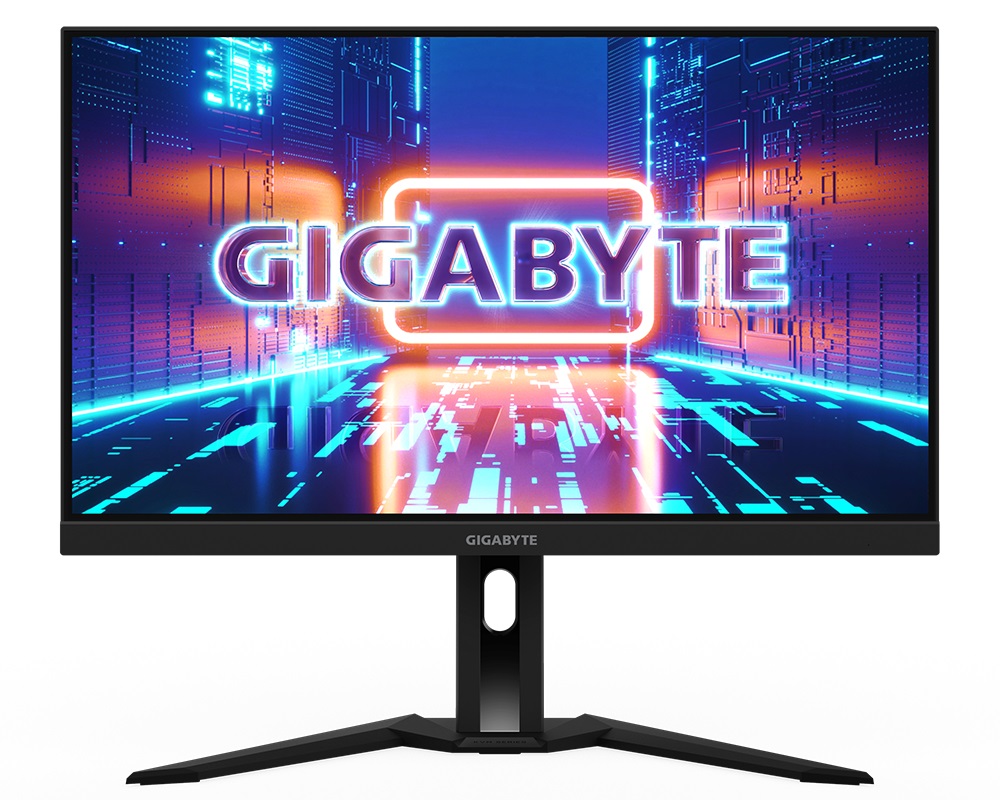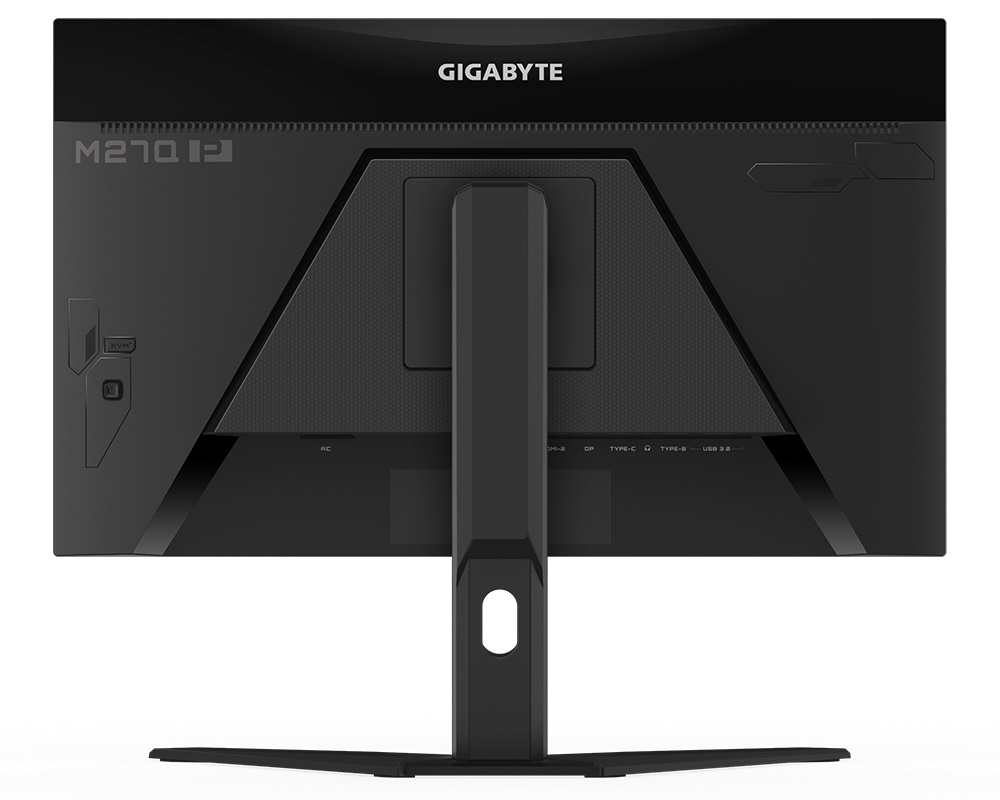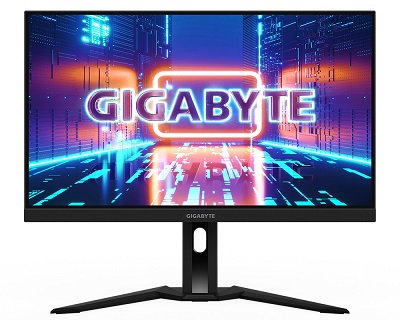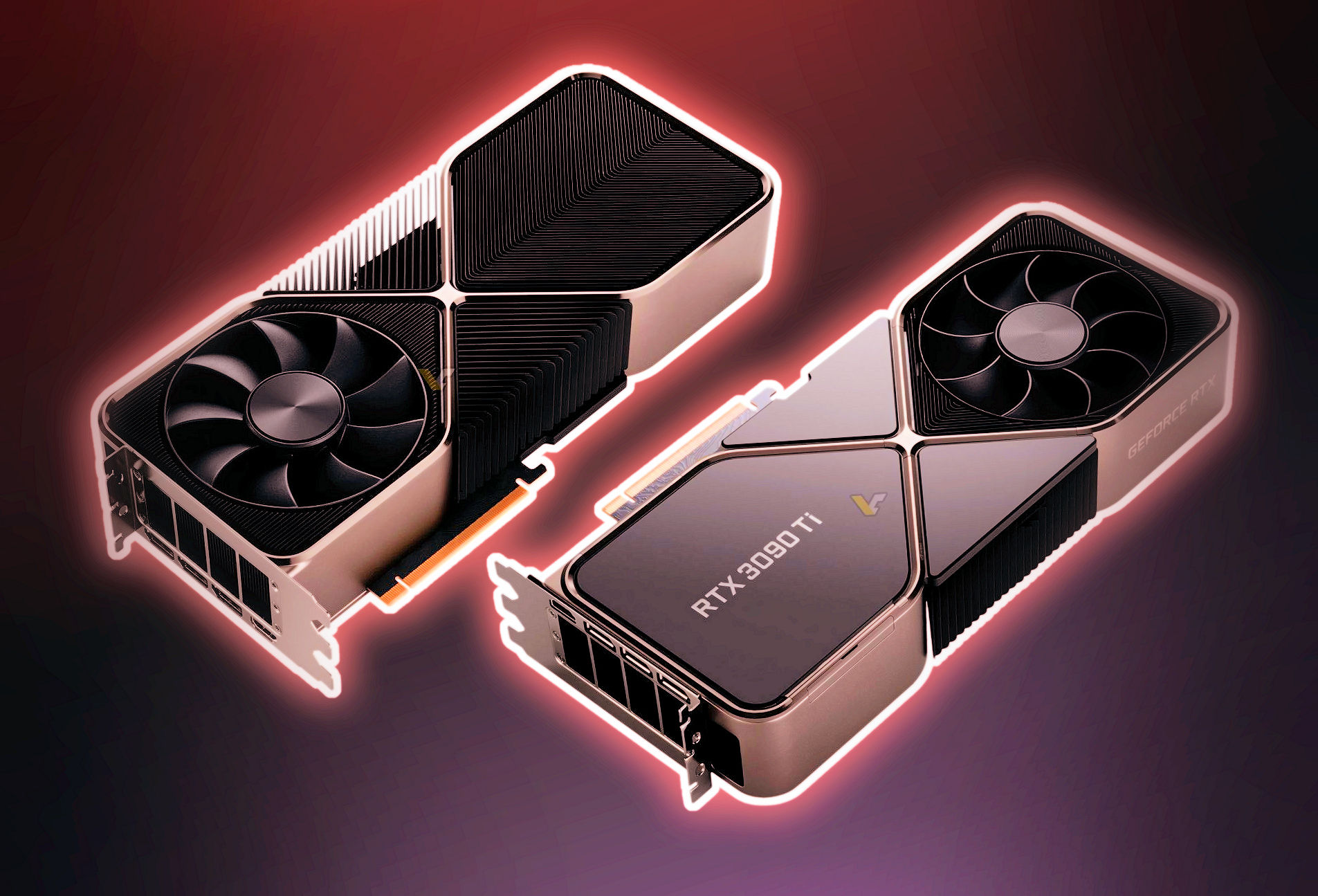
As an Amazon Associate I earn from qualifying purchases made using the “Buy” button at the bottom of this post. Where possible, you’ll be redirected to your nearest store. Further information on supporting our work.
Update: Update on price and availability. News piece below initially published 10th February 2022.
For many people the M27Q provides the perfect blend of price and performance. Whilst most don’t find it problematic in practice, the unconventional ‘BGR’ subpixel layout isn’t to everyone’s liking. And whilst fast, the pixel responses aren’t quite as good as some competing models. The Gigabyte M27Q P provides a similar feature set, but uses an alternative panel. The aesthetics remain the same, with a basic matte-black plastic design with a glossy black inner section at the front of the stand neck. The top and side bezels adopt a dual-stage design, with slim panel border surrounding the image plus a thin hard plastic outer part. The OSD (On Screen Display) is controlled by a joystick at the rear of the monitor, towards the bottom right as viewed from in front. The company’s infamous ‘OSD Sidekick’ software can be used as in alternative, if preferred.
A 27″ 2560 x 1440 (WQHD or 1440p) IPS-type panel is employed, with a matte anti-glare screen surface, 1000:1 static contrast ratio, 178°/178° viewing angles and 10-bit (8-bit + FRC) colour specified. A 170Hz refresh rate is supported alongside Adaptive-Sync, including AMD FreeSync Premium with 48 – 170Hz VRR range plus LFC. A flicker-free WLED backlight provides a 98% DCI-P3 colour gamut and 400 cd/m² typical maximum luminance. This is wider DCI-P3 coverage than specified for the ‘regular’ M27Q (92%), but the ‘regular’ model also provides excellent Adobe RGB coverage with the gamut skewed towards extension in the green region. VESA DisplayHDR 400 support is included, allowing the monitor to respond to HDR10 content and provide a basic HDR experience. Without a particularly high luminance by HDR standards or local dimming being required, yet allowing the relatively generous gamut and 10-bit colour processing to be used appropriately.
Low Blue Light (LBL) settings are also included to aid viewing comfort, whilst a 1ms grey to grey response time is specified. As usual, approach with caution. The monitor also includes the ‘Aim Stabilizer Sync’ strobe backlight setting, which can be used alongside VRR if you wish. The included stand offers tilt and height adjustment (130mm or 5.12 inches). It can be removed to make way for an alternative VESA 100 compatible solution., if you wish The ports face downwards and include; AC power input (internal power converter), DP 1.4, 2 HDMI 2.0 ports, USB-C (18W PD, DP Alt Mode, upstream data), a 3.5mm headphone jack and 2 USB 3.0 ports (plus upstream). 2 x 3W speakers are integrated into the monitor. KVM functionality is included, allowing you to assign connected USB peripherals to either of two connected systems and easily switch between them. A dedicated KVM button is included for easy switching. 2-system PiP and PbP functionality is also included.
Further details can be found on the manufacturer’s website. The monitor is listed for ~$400 USD.
|
|








